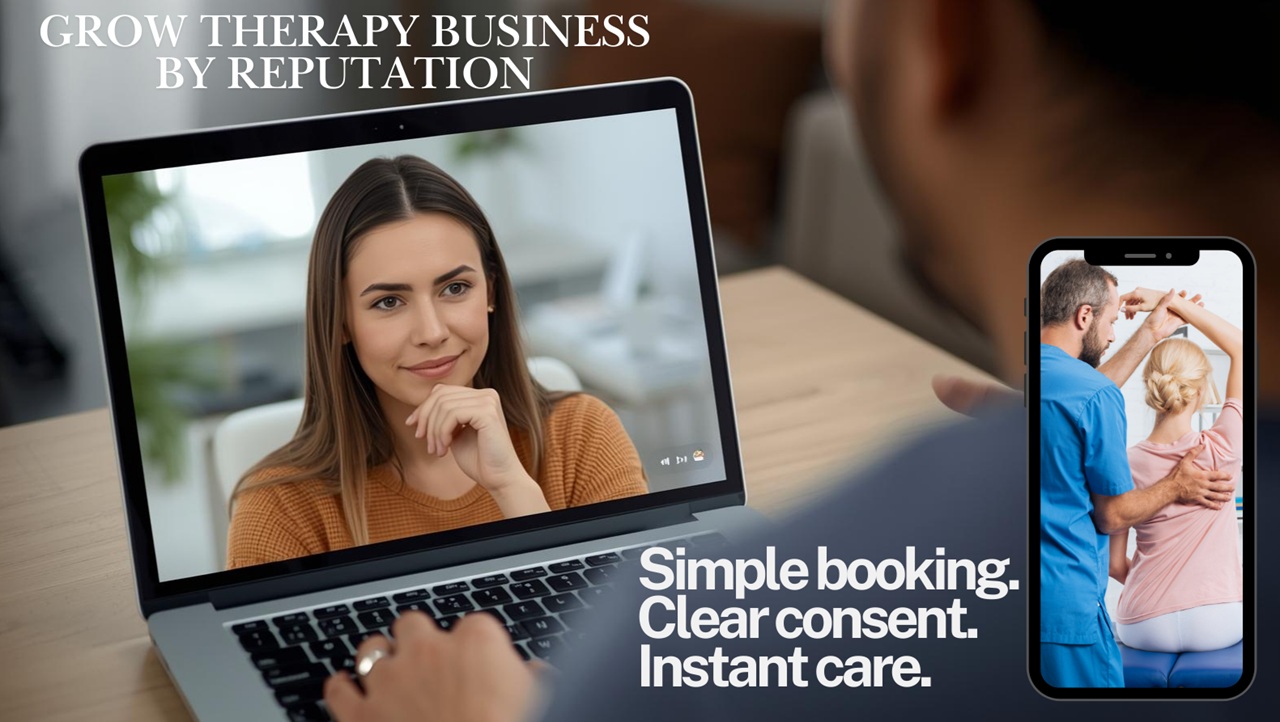Starting therapy is brave, yet the first steps can feel overwhelming. A clear therapy intake form makes these changes. As clients see what you’ll ask, how you’ll use information, and exactly how to book, anxiety drops and readiness rises. Consequently, the first session focuses on the relationship—not logistics.
Why a therapy intake form calms nerves
Ambiguity fuels fear; clarity builds trust. With a concise therapy intake form, you explain scope (not crisis care), privacy, fees, and boundaries in everyday language. Moreover, you gather essentials—contact, goals, availability—without turning the process into a test. As a result, clients arrive informed, consenting, and far more comfortable.
Design your therapy intake form for safety, consent, and ease
Nadia rebuilt her SphereCard with safety front and center:
- Above the fold: three actions—Book Appointment (or Book Order) tied to her daytime calendar, Message for quick questions, and Video Chat for a 10-minute chemistry check.
- Consent in plain language: what therapy is, what it isn’t, how confidentiality works, and when exceptions apply.
- Essentials only: name/pronouns, contact, time zone, goals, past therapy, medications (optional), and an emergency contact.
- Access & preferences: telehealth vs. in-person, sensory/communication preferences, and cultural or language notes.
- Crisis redirect: a bold button that routes emergencies to local resources before continuing.
Because the therapy intake form lives beside booking and messaging, clients complete it once and never chase separate portals.
What improved after publishing the counseling intake
Discovery calls became shorter yet warmer. Additionally, first sessions began with shared expectations rather than fee surprises. Cancellations also dropped because automated reminders and a friendly late policy appeared on the same page. Finally, reviews started highlighting “felt safe” and “clear next steps.”
Step-by-step: build a counseling intake that invites honesty
- Lead with consent, not disclaimers. Use welcoming language: what we’ll explore, how we’ll set goals, and how to pause or refer. Therefore, clients feel partnered—not processed.
- Collect less—and explain why. Keep questions essential and add a single line: “We ask this to tailor care; it’s okay to skip.”
- Map the first 15 minutes. Publish a micro-agenda: check-in, goals, boundaries, and how you’ll track progress.
- Make booking effortless. Place Book Appointment / Book Order above the fold; connect it to your daytime calendar with options for telehealth or office.
- Keep one thread. Turn on Messaging for logistics; reserve Video Chat for chemistry checks and tech tests.
- Name the limits. State clearly: not crisis care, not legal evaluations; then add a crisis button with local numbers.
Example: a 3-minute screen-share that eases first-session jitters
- First minute — Consent, kindly: Scroll the plain-language consent and show the crisis button.
- Second — Intake essentials: Highlight two goal questions and one preference field; reassure, “Skip anything you’d like.”
- Third — Book now: Tap Book Appointment and place a telehealth slot on the daytime calendar; an automatic message follows with a brief tech-check link.
Because the path is transparent and supportive, clients feel safe enough to begin real work.
SphereCard setup for therapists (copy this)
- Form title: “Book Appointment” (or Book Order) → routes to daytime calendar (telehealth or office)
- Messaging on for logistics; Video Chat for 10-minute chemistry checks and tech tests
- Display widgets: Therapy Intake Form, Consent & Policies, Fees & Insurance Notes, About & Approach, Reviews, Map/Telehealth Info, Calendar
- Print the QR flyer for your door and referral packets: “Scan to review consent, complete intake, and book.”
Final takeaway
Safety begins before session one. When your therapy intake form is accompanied by clear consent, a simple booking process, and friendly messaging, clients feel respected; therefore, the first conversation can focus on healing instead of paperwork.

